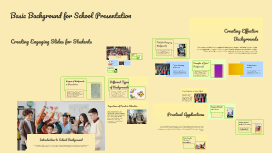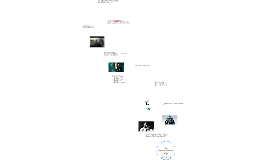Basic Background for School Presentation
Transcript: Basic Background for School Presentation Creating Effective Backgrounds Creating Engaging Slides for Students Tools for Designing Backgrounds Understanding the fundamentals of background design, utilizing the right tools, and recognizing common pitfalls can significantly enhance presentation quality. Effective backgrounds not only captivate attention but also support the educational message being conveyed. Popular tools for designing backgrounds include Canva, Adobe Spark, and Microsoft PowerPoint. These platforms offer a variety of templates, color palettes, and customization options that cater to different educational themes and subjects. Typography Choices Design Elements Typography plays a vital role in readability. Choose fonts that are clear and suited for the audience's age. Establish a hierarchy with font sizes to guide viewers through the content effortlessly. Effective design elements are crucial for creating engaging school presentations, specifically in color schemes, images, layouts, and typography. Implementing these elements assists in delivering a clearer message and maintains audience interest. Layout Considerations Color Schemes A clean and organized layout fosters comprehension. Use grids to align text and images systematically. Maintain a consistent format across slides to minimize cognitive load and make navigation intuitive for the audience. Color schemes should be chosen based on psychological effects and the subject matter. Use contrasting colors to highlight key information and create a visually appealing presentation, while ensuring readability by maintaining sufficient contrast between background and text colors. Examples of Good Backgrounds Avoiding Common Mistakes Tips for Customizing Backgrounds Image Selection Select high-quality images that are relevant to the content. Images should enhance understanding and retention, not distract. It’s beneficial to use images that resonate with the audience or invoke emotion related to the subject matter. Common mistakes in background design include excessive clutter and inappropriate colour combinations. Prioritizing simplicity and ensuring text readability against the background should be emphasized to prevent confusion. Customization is key in making a background unique and relevant. Using consistent color schemes, emphasizing readability with contrasting fonts, and integrating thematic images can enhance visual appeal and focus. Good backgrounds feature simple designs that don’t distract from key content. Examples include subtle patterns, gradient colour schemes, and images with soft focus that support the topic without overshadowing the message. Purpose of Backgrounds in Presentations Different Types of Backgrounds Using Backgrounds in Various Subjects Backgrounds set the tone and context for presentations, aiding in focus and understanding. Well-chosen backgrounds enhance the viewer's emotional response and create a cohesive narrative throughout the presentation. Common types of backgrounds include solid color, gradient, texture, and thematic images. Each type serves a specific purpose, offering nostalgia, professionalism, or inspiration depending on the subject matter. Different subjects benefit from tailored backgrounds. For instance, vibrant backgrounds for art classes can inspire creativity, while subdued tones in science presentations can maintain focus on complex diagrams. Subject-specific visual themes enhance relevance and engagement. Importance of Visuals in Education Engaging Students with Visuals Visual elements, particularly backgrounds, facilitate better engagement and retention. Studies show that students retain 65% of information when visually supported compared to 10% through verbal communication alone. Effective visuals can spark interest and promote active learning. Practical Applications Visuals significantly aid learning by making complex information more accessible and memorable. Studies show that students retain 65% of what they see compared to only 10% of what they hear. Analyzing Impact of Background on Learning Visual backgrounds play a vital role in enhancing educational presentations across various subjects, making learning more engaging and effective. Their strategic use can significantly influence student learning outcomes and retention rates. Research indicates that visually appealing backgrounds positively affect student performance. Backgrounds that align with learning objectives reinforce key concepts and enhance cognitive processing, which can lead to improved academic outcomes across diverse learner demographics. Introduction to School Background Future Trends in Educational Presentations Visual elements play a crucial role in education, enhancing comprehension and retention. Backgrounds in school presentations not only provide context but also engage students’ attention effectively. The future of educational presentations focuses on interactive and immersive backgrounds, such as augmented reality

















